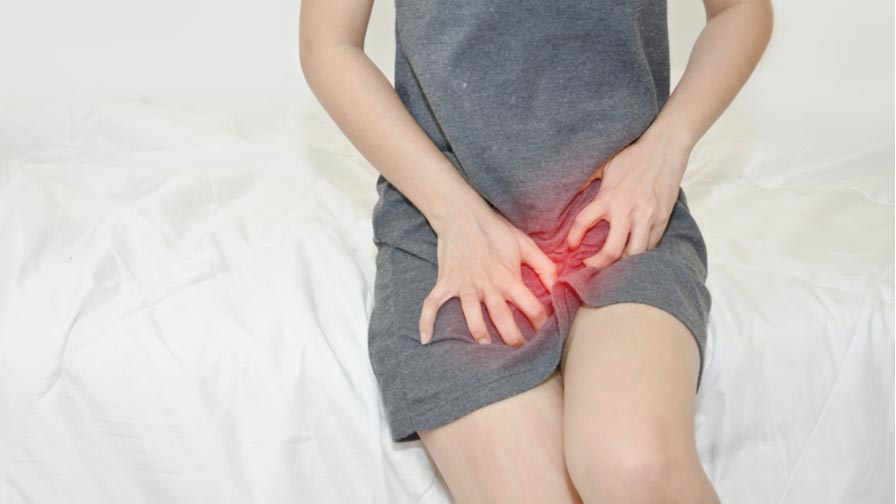Vaginal Cysts- Types, Causes, Symptoms, Treatment and Prevention.
Schedule Your
Appointment
Vaginal Cysts: Overview
Cysts are sac-like lumps which are filled with air, fluid, or any other substance. Generally, cysts are not harmful or painful. Cysts can vary in size, from too small as salt to large as the size of an orange. A person can have these cysts anywhere on the body, including the genitals. A female of any age can have vaginal cysts. Vaginal cysts can be caused due to several reasons including injury to the vagina during childbirth, due to benign tumors in the vagina, or due to the buildup of fluids.

Types of Vaginal Cysts
Bartholin’s Gland Cysts:
Bartholin’s gland cysts are cysts formed in the Bartholin’s glands, which are present on both sides of the vaginal opening. These glands produce fluid which lubricates the labia, the outer lips of the vagina.
Inclusion Cysts:
Most commonly, inclusion cysts are formed on the lower back of the vaginal wall. These cysts are very small in size and are unlikely to get noticed. Inclusion cysts are also one of the most common types of vaginal cysts. They may be caused by injury during childbirth or surgery.
Müllerian Cysts:
Müllerian cysts form as a result of the material left behind during the development of the baby. These cysts can grow anywhere on the vaginal walls and can also contain mucus.
Gartner’s Duct Cysts:
These cysts occur when the ducts in the developing embryo do not vanish (like they should) after the baby is born. Over the time, these leftover ducts can form vaginal cysts.
Causes
Vaginal cysts mostly occur when a duct or gland gets clogged, due to which the liquid and other materials get collected. Generally, the cause of a vaginal cyst determines the type.
Symptoms
Vaginal cysts usually do not cause any noticeable symptoms. It depends on the size and location of the cyst or if the female can feel the lump from the cyst or not. In most cases, vaginal cysts are discovered by the gynecologist during the female’s gynecological examination. Vaginal cyst may remain of the same size or grow larger with time. Often, vaginal cysts are not painful. However, vaginal cysts which are larger in size may cause discomfort during intercourse, walking, exercising, or upon inserting a tampon. Vaginal Cysts mostly cause pain if they are infected. An individual’s normal bacteria from the skin or STDs may lead to an infected vaginal cyst which may lead to an abscess.
Complications
The most common complication from a cyst is the infection which can cause an abscess, a large accumulation of pus and fluid which can cause redness, pain, and swelling. An abscess has to be drained in order to heal. A large number of bacteria present on the skin can cause a cyst to develop into an abscess. Bacteria from sexually transmitted diseases including chlamydia and gonorrhea can also cause the cyst to develop into an abscess. In other cases, bacteria such as E. coli, which is normally present in the gut, can lead to Bartholin Cyst abscess.
Diagnosis
During a pelvic exam, the gynecologist may feel the mass (cyst) on the vaginal wall. The gynecologist will then review the patient’s medical history and ask about the symptoms that the patient is having. The gynecologist might also suggest undergoing additional tests to rule out other conditions. The tests may include:
Biopsy of a tissue sample from the cyst to diagnose the possibility of vaginal cancer
Tests on the secretions or discharge from the vagina or cervix to find out if the patient has a sexually transmitted infection (STI).
An ultrasound, MRI or CT scan to see the detailed images of cyst.
Treatment
In most cases, vaginal cysts are not serious and do not require medical treatment. But, if the patient experiences any discomfort or pain due to the size of the cyst, infection or abscess, treatment is required. Following are the treatment options for Vaginal Cysts:
Antibiotics are prescribed if the vaginal cyst is infected, or in cases where the patient has a sexually transmitted infection. If the patient has an abscess, the doctor will firstly drain out the abscess. No antibiotics are needed after the abscess has been drained .
The gynecologist may suggest the female to take Sitz baths, several times a day for 3-4 days. Soaking in warm water may treat a small infected vaginal cyst. Warm sitz bath will help the cyst to burst and drain out with no further intervention required.
The treatment option of “Marsupialization” is suitable for recurring vaginal cyst or bothersome cysts. In case of Marsupialization, the gynecologist put stitches on both sides of the drainage incision in order to form a permanent opening. A rubber tube is then inserted to drain for a few days post procedure. This is done to help prevent recurrence of the cyst.
In rare cases of Bartholin cysts, gland removal is the only treatment option for the patient. However, this situation occurs in very rare cases.
Infected or large cysts may require surgical drainage in order to remove the pus or contents. This is usually done under the influence of local anesthesia or sedation. The doctor will make a small incision in the cyst to drain it. After draining, the doctor will put a small rubber tube in the incision so that the cyst can remain open for several weeks and drain completely.
Prevention
It is nearly impossible for a female to prevent the growth of vaginal cysts. However, keeping the vagina as clean as possible, practicing safe sex and cleaning up after intercourse can help prevent infections and sexually transmitted diseases.
Our Clinical Footprint

30000+
Happy Patients
10000+
Surgeries
100+
Doctors
70+
Clinics
20+
Cities
200+
Hospitals
Our Clinical Footprint

30000+
Happy Patients
10000+
Surgeries
100+
Doctors
70+
Clinics
20+
Cities
200+
Hospitals